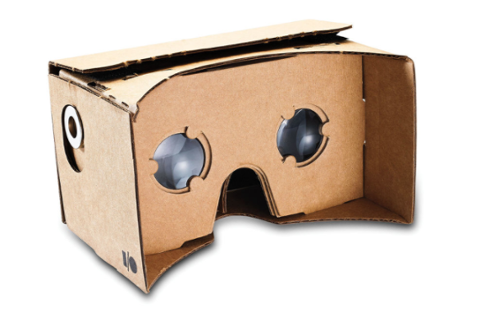 Developers interested in virtual reality (VR), take note: Google’s SDK for its VR platform, Daydream, is now out of beta. Version 1.0 of the SDK, available on Google’s Daydream developer Website, is meant to streamline a number of programming functions related to VR production, leaving developers more time and bandwidth to actually create content. At Google’s I/O event this summer, company executives offered an early glimpse of Daydream’s user interface, including VR-enabled apps such as Google Street View. Attendees also saw a reference design for a smartphone-powered VR headset and one-handed controller, although Google kept most details related to the hardware under wraps. Prerequisites for Daydream development include a Nexus 6P phone running Android N, which developers must use as the “headset phone,” or hardware representing the VR experience. There is, however, a caveat. “The 6P’s thermal performance is not representative of the consumer Daydream-ready devices that will be launching later this year,” mentions the material accompanying the SDK. “In particular, expect the 6P to thermally throttle CPU and GPU performance after a short period of use.” Developers will also need a second Android phone, running at least KitKat; this device will emulate the Daydream controller, so it needs an internal gyroscope. A VR viewer, such as Google Cardboard, will stand in for the Daydream headset. With all those pieces in place, Google provides a walkthrough of setting up the hardware to run demo Daydream apps. For those who want to build games—probably a significant portion of early VR developers—the SDK includes native Unity and UE4 integration, tools that many of those creators already use in their daily programming. The UE4 elements to note in particular are Daydream controller support, a “neck model,” and rendering optimizations. The initial Daydream headset and phones are due out sometime this fall. Google may give more information about the platform at its October 4 event, at which it’s expected to also roll out some new phone branding.
Developers interested in virtual reality (VR), take note: Google’s SDK for its VR platform, Daydream, is now out of beta. Version 1.0 of the SDK, available on Google’s Daydream developer Website, is meant to streamline a number of programming functions related to VR production, leaving developers more time and bandwidth to actually create content. At Google’s I/O event this summer, company executives offered an early glimpse of Daydream’s user interface, including VR-enabled apps such as Google Street View. Attendees also saw a reference design for a smartphone-powered VR headset and one-handed controller, although Google kept most details related to the hardware under wraps. Prerequisites for Daydream development include a Nexus 6P phone running Android N, which developers must use as the “headset phone,” or hardware representing the VR experience. There is, however, a caveat. “The 6P’s thermal performance is not representative of the consumer Daydream-ready devices that will be launching later this year,” mentions the material accompanying the SDK. “In particular, expect the 6P to thermally throttle CPU and GPU performance after a short period of use.” Developers will also need a second Android phone, running at least KitKat; this device will emulate the Daydream controller, so it needs an internal gyroscope. A VR viewer, such as Google Cardboard, will stand in for the Daydream headset. With all those pieces in place, Google provides a walkthrough of setting up the hardware to run demo Daydream apps. For those who want to build games—probably a significant portion of early VR developers—the SDK includes native Unity and UE4 integration, tools that many of those creators already use in their daily programming. The UE4 elements to note in particular are Daydream controller support, a “neck model,” and rendering optimizations. The initial Daydream headset and phones are due out sometime this fall. Google may give more information about the platform at its October 4 event, at which it’s expected to also roll out some new phone branding. Google's Daydream VR SDK Out of Beta
 Developers interested in virtual reality (VR), take note: Google’s SDK for its VR platform, Daydream, is now out of beta. Version 1.0 of the SDK, available on Google’s Daydream developer Website, is meant to streamline a number of programming functions related to VR production, leaving developers more time and bandwidth to actually create content. At Google’s I/O event this summer, company executives offered an early glimpse of Daydream’s user interface, including VR-enabled apps such as Google Street View. Attendees also saw a reference design for a smartphone-powered VR headset and one-handed controller, although Google kept most details related to the hardware under wraps. Prerequisites for Daydream development include a Nexus 6P phone running Android N, which developers must use as the “headset phone,” or hardware representing the VR experience. There is, however, a caveat. “The 6P’s thermal performance is not representative of the consumer Daydream-ready devices that will be launching later this year,” mentions the material accompanying the SDK. “In particular, expect the 6P to thermally throttle CPU and GPU performance after a short period of use.” Developers will also need a second Android phone, running at least KitKat; this device will emulate the Daydream controller, so it needs an internal gyroscope. A VR viewer, such as Google Cardboard, will stand in for the Daydream headset. With all those pieces in place, Google provides a walkthrough of setting up the hardware to run demo Daydream apps. For those who want to build games—probably a significant portion of early VR developers—the SDK includes native Unity and UE4 integration, tools that many of those creators already use in their daily programming. The UE4 elements to note in particular are Daydream controller support, a “neck model,” and rendering optimizations. The initial Daydream headset and phones are due out sometime this fall. Google may give more information about the platform at its October 4 event, at which it’s expected to also roll out some new phone branding.
Developers interested in virtual reality (VR), take note: Google’s SDK for its VR platform, Daydream, is now out of beta. Version 1.0 of the SDK, available on Google’s Daydream developer Website, is meant to streamline a number of programming functions related to VR production, leaving developers more time and bandwidth to actually create content. At Google’s I/O event this summer, company executives offered an early glimpse of Daydream’s user interface, including VR-enabled apps such as Google Street View. Attendees also saw a reference design for a smartphone-powered VR headset and one-handed controller, although Google kept most details related to the hardware under wraps. Prerequisites for Daydream development include a Nexus 6P phone running Android N, which developers must use as the “headset phone,” or hardware representing the VR experience. There is, however, a caveat. “The 6P’s thermal performance is not representative of the consumer Daydream-ready devices that will be launching later this year,” mentions the material accompanying the SDK. “In particular, expect the 6P to thermally throttle CPU and GPU performance after a short period of use.” Developers will also need a second Android phone, running at least KitKat; this device will emulate the Daydream controller, so it needs an internal gyroscope. A VR viewer, such as Google Cardboard, will stand in for the Daydream headset. With all those pieces in place, Google provides a walkthrough of setting up the hardware to run demo Daydream apps. For those who want to build games—probably a significant portion of early VR developers—the SDK includes native Unity and UE4 integration, tools that many of those creators already use in their daily programming. The UE4 elements to note in particular are Daydream controller support, a “neck model,” and rendering optimizations. The initial Daydream headset and phones are due out sometime this fall. Google may give more information about the platform at its October 4 event, at which it’s expected to also roll out some new phone branding. 


